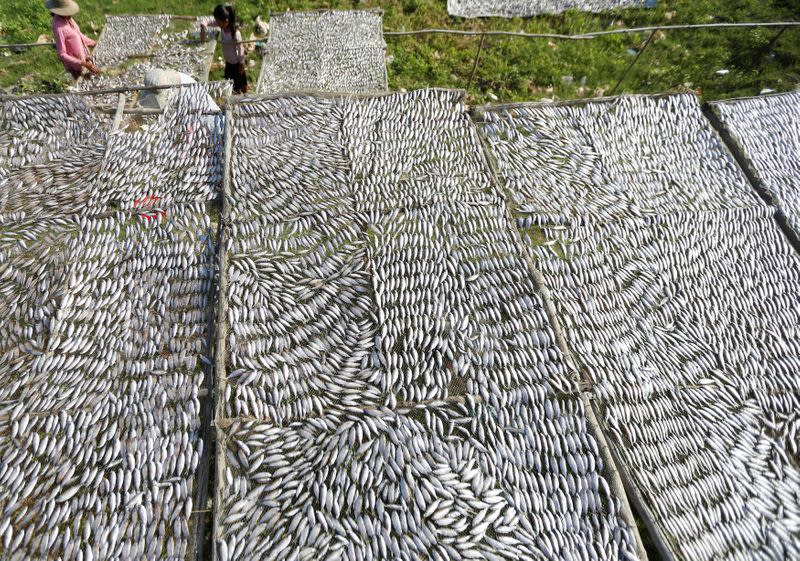By Prak Chan Thul and Lach Chantha
PHNOM PENH (Reuters) – Cambodian fisherman Tin Yusos has a meal with his wife and granddaughter aboard a boat that serves as his home anchored on the banks of the Tonle Sap River.
They plan to leave for another day of fishing in the Tonle Sap and Mekong rivers area, although their expectations are low.
“There are no more big fish,” said Tin Yusos, 57. In the past, he was able to catch about 30 kilos of fish a day. Now, he usually fishes just over a kilo, worth about 15,000 riel ($ 3.69).
Experts blame hydroelectric projects, sand mining, deforestation, swamp conversion and climate change for the dramatic drops in water levels in the region’s rivers, severely disrupting fishing and threatening the supply of food to millions.
The Mekong usually swells in the rainy season, where it converges with the Tonle Sap River, causing an unusual reverse flow to the Tonle Sap Lake, filling it up and providing abundant fish stocks.
But in recent years, flows to the largest lake in Southeast Asia have sometimes been delayed, a factor attributed to drought and hydroelectric dams upstream from the Mekong.
Whether or not China’s 11 dams are harming the downstream countries that depend on the 4,350 km (2,700 miles) of the river has become a geopolitical issue, with the United States calling on Lower Mekong nations like Thailand, Vietnam and Cambodia , which require answers.
Marc Goichot, a specialist in waterways in the region of the World Fund for Nature (WWF), said that dams and sand mining in particular can contribute to the loss of fish.
“Basically, the whole system is under stress and changing,” he said. “We need to address the root causes of these changes and re-establish key processes, such as fish movement.”
Ly Safi, 32, another Cambodian fisherman, said this year’s fishing was the worst and he felt trapped in a livelihood with little future.
“Some fishermen could save some money and stop doing business on land, but for us we can’t.”
($ 1 = 4,064,0000 Cambodian riel)
(Written by Ed Davies; Editing by Raissa Kasolowsky)
